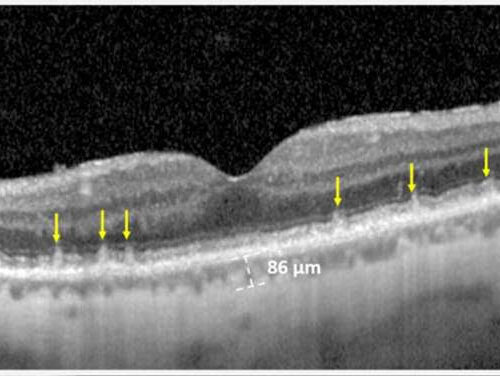by The Mount Sinai Hospital The abnormal subretinal drusenoid deposits (SDDs) are the multiple, gray, conical lesions (yellow arrows) sitting on top of the bright white band known as the retinal pigment epithelium (RPE). They are pushing and penetrating the thin white retinal layer above them. All the other retinal layers further above are normal....
Tag: <span>blinding eye disease</span>
Post
Blinding eye disease is strongly associated with heart disease and stroke
THE MOUNT SINAI HOSPITAL / MOUNT SINAI SCHOOL OF MEDICINE Patients with a specific form of age-related macular degeneration (AMD), a leading cause of blindness in the United States, are at significant risk for cardiovascular disease and stroke, according to new research from New York Eye and Ear Infirmary of Mount Sinai. This study, published...
Post
High caffeine consumption may be associated with increased risk of blinding eye disease
THE MOUNT SINAI HOSPITAL / MOUNT SINAI SCHOOL OF MEDICINE Consuming large amounts of daily caffeine may increase the risk of glaucoma more than three-fold for those with a genetic predisposition to higher eye pressure according to an international, multi-center study. The research led by the Icahn School of Medicine at Mount Sinai is the...

